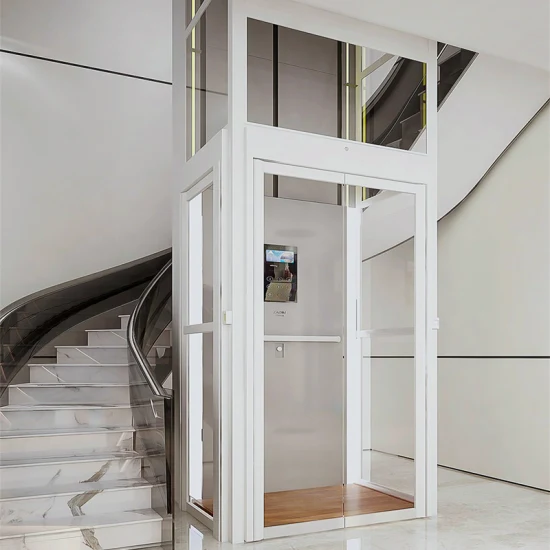Top Lift Companies in London: Offering Top Quality Installations and Upkeep
Top Lift Companies in London: Offering Top Quality Installations and Upkeep
Blog Article
Diving Into the World of Elevators: Common Issues Faced by Various Lift Devices
As we navigate with the upright transportation systems of contemporary structures, lifts stand out as an indispensable part of our day-to-day lives. From hydraulic lifts to traction systems and machine-room-less layouts, each lift kind comes with its set of usual problems.
Hydraulic Elevators
Hydraulic elevators, often liked for low-rise structures, make use of fluid stress to manage the motion of the elevator auto (lift repair companies). This device entails a hydraulic pump pressing oil right into a cyndrical tube, creating the lift to relocate the wanted direction. While hydraulic elevators are understood for their quiet and smooth operation, they do feature their very own collection of common concerns
One prevalent issue with hydraulic elevators is oil leak. The seals in the hydraulic system can break gradually, resulting in oil infiltration. This not only produces a mess yet can also impact the elevator's performance if left unaddressed. Additionally, issues with the control system, such as malfunctioning valves or a malfunctioning pump, can cause interruptions in the lift's motion.
Regular maintenance and prompt repair work are vital to ensure the smooth functioning of hydraulic elevators. By dealing with these usual concerns proactively, building owners can decrease downtime and ensure the security and efficiency of their vertical transportation system.
Traction Lifts
When taking into consideration upright transport systems in structures, an additional common type apart from hydraulic elevators is the grip lift. Traction elevators operate making use of a system of ropes and counterweights that move the elevator car by clutching onto the hoist ropes. This mechanism permits smoother and much faster vertical transportation compared to hydraulic systems.
One of the common concerns encountered by traction lifts is rope wear. The constant movement of the ropes within the traction system can bring about tear and wear gradually, possibly triggering the elevator to malfunction or come to be risky for usage. Normal inspections and maintenance of the ropes are important to make certain the elevator's correct functioning and safety.
Another concern that traction lifts might come across is associated to the control system. Issues with the control system can lead to problems such as unpredictable activity, hold-ups in feedback times, or even complete closures. Normal testing and upkeep of the control system are vital to stop such problems and ensure the lift's integrity.
Machine-Room-Less (MRL) Elevators

Among the vital components of MRL lifts is the compact gearless grip equipment that is installed within the hoistway. This maker efficiently drives the lift car without the demand for large equipment found in typical grip elevators. Additionally, MRL lifts generally make use of a weight system to balance the auto, additional improving their power performance.
Despite their benefits, MRL elevators may encounter obstacles connected to repair and maintenance as a result of the constrained area for tools installment. Ease of access for servicing parts within the shaft can be limited, requiring specialized training for service technicians. Appropriate maintenance timetables and routine evaluations are important to guarantee the ongoing smooth operation of MRL elevators.
Overloading and Weight Limitation Issues
Overwhelming and weight limitation problems are essential issues in elevator operations. Elevator producers style lifts with certain weight capacities to guarantee passenger safety and equipment long life.
When lifts are strained, it places excessive pressure on the electric motor, wires, and other elements, possibly triggering breakdowns or breakdowns. Security systems such as sensors and overload sensing units are in area to prevent elevators from relocating if they spot excess weight. Furthermore, going beyond weight limits can lead to boosted energy consumption and deterioration on the find out here lift system.
To mitigate overloading concerns, developing supervisors should prominently display weight limits in elevators and educate occupants on the importance of adhering to these restrictions - lift repair companies. Regular upkeep checks by certified technicians can also aid guarantee that lifts are operating within secure weight criteria. By resolving overloading and weight restriction problems proactively, structure proprietors can enhance elevator security and effectiveness
Electric System Failures
Exceeding weight limitations in lifts can not just cause mechanical issues yet likewise possibly add to electrical system failings within the lift framework. Electrical system failures are a crucial problem in lift procedure, as they can trigger unanticipated closures, breakdowns, and even safety and security dangers. One usual electric problem is the overheating of parts due to too much existing flow brought on by overwhelming the elevator past its capability. This can lead to harm to the motor, electrical wiring, or control systems, resulting in expensive repair work and downtime.
Additionally, power rises or fluctuations in the electric supply can additionally disrupt the lift's procedure, affecting its performance and safety. These electrical disturbances can harm sensitive elevator parts such as control board, circuit card, or sensing units, bring about system failures. Normal upkeep and inspections are essential to identify and address potential electric issues immediately, making use this link certain the efficient and risk-free operation of lift systems. By sticking to weight restrictions and carrying out regular electric system checks, building proprietors can reduce the danger of electric failures in elevators.
Verdict

Hydraulic lifts, often liked for low-rise buildings, make use of fluid stress to manage the motion of the elevator automobile.When thinking about vertical transport systems in structures, one more common kind aside from hydraulic elevators is the grip lift. Traction elevators operate using a system of ropes and weights that move the elevator automobile official statement by clutching onto the hoist ropes. Unlike standard lifts that call for a separate device area to house the equipment, MRL elevators incorporate many of the components within the shaft, removing the requirement for a specialized equipment space.In conclusion, lifts deal with usual issues such as hydraulic malfunctions, traction system failures, and electrical system troubles.
Report this page